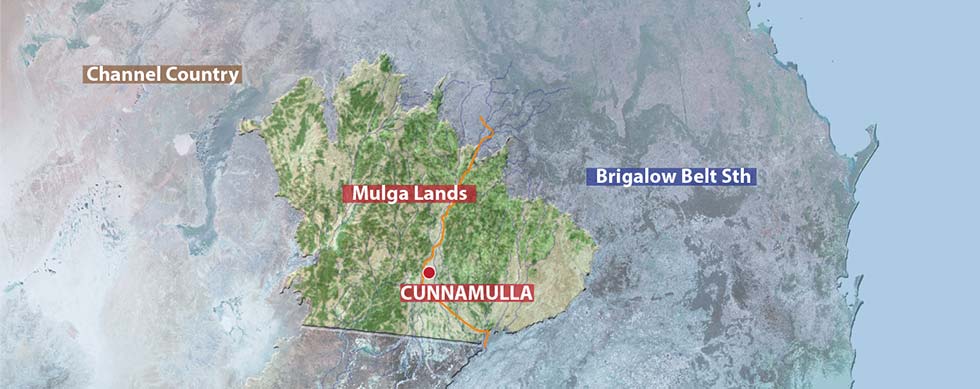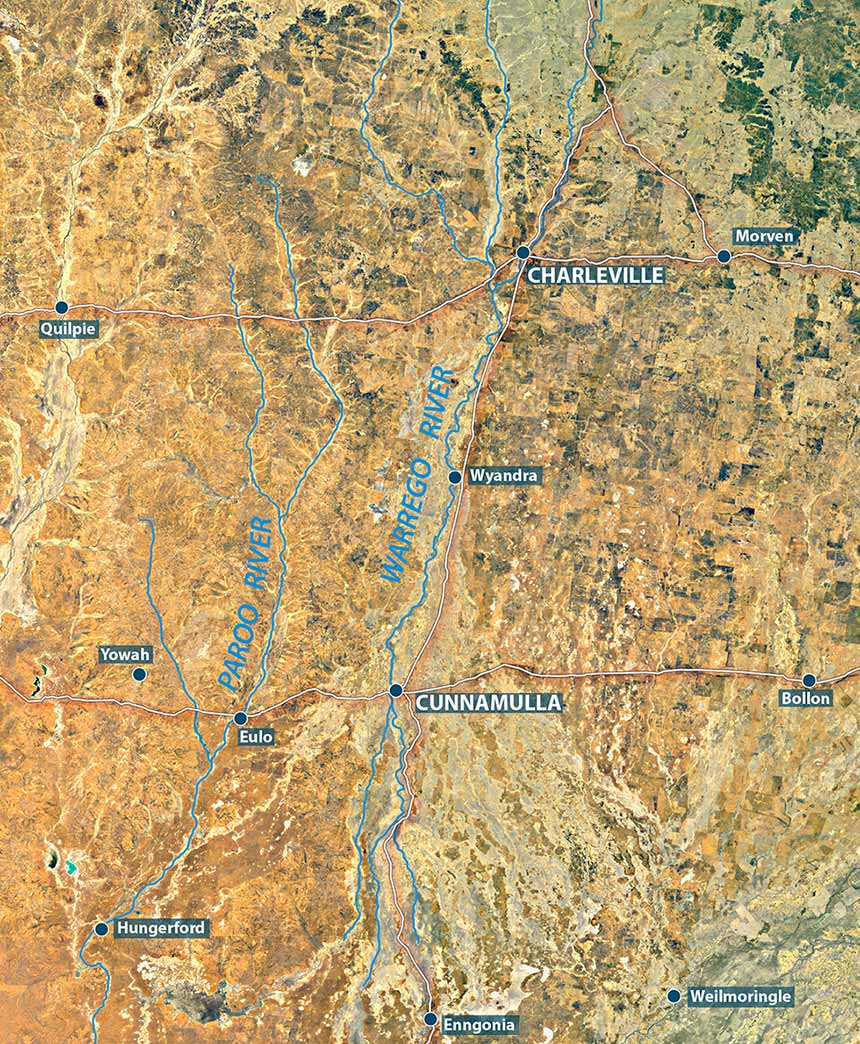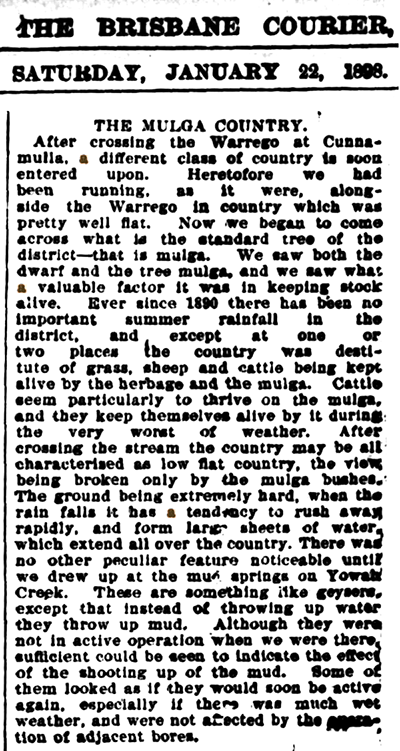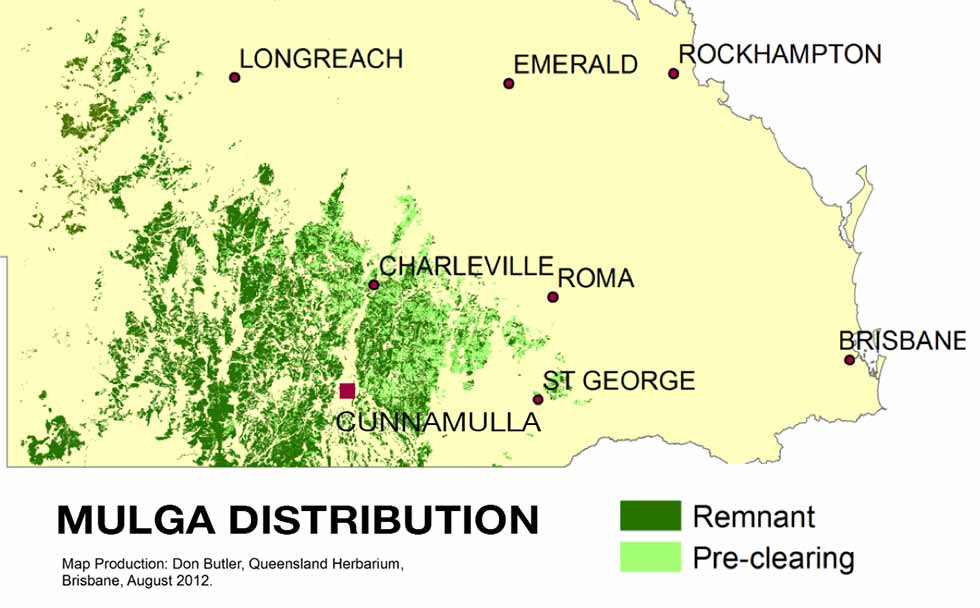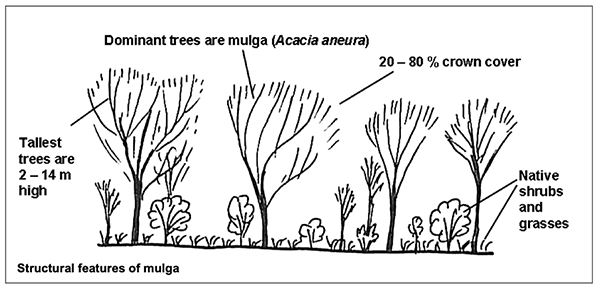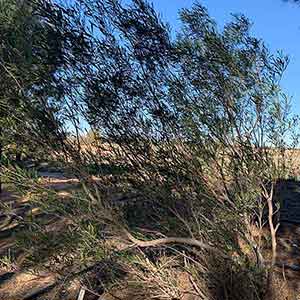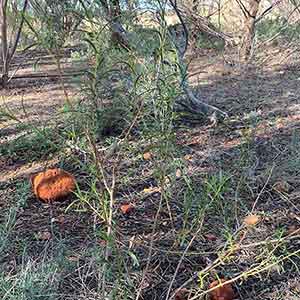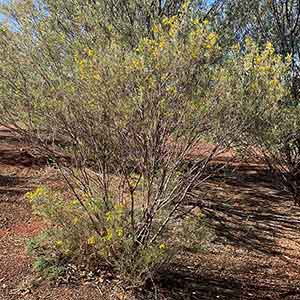Extracts from Queensland Government notes on the management of mulga regrowth included below give us a valuable insight into the key features of mulga.
In the Mulga Lands Bioregion, mulga is the most prominent woody plant, forming a canopy between about 2 and 14 m tall, often with other trees or shrubs.
Eucalypts like poplar box, silver-leaved ironbark and gum-barked coolibah or forest-gum are important canopy species in more productive areas. Other eucalypts that occur in mulga country include yapunyah and napunyah and river red gum.
Canopy cover can vary from 20 – 80%. It is found on red earth plains, sandplains or on harder shallow soils.
Mulga is one of Australia’s most iconic and widespread species, occurring in every mainland Australian state except Victoria.
In Queensland, mulga is characteristic of a wide range of arid and semi-arid vegetation communities, from low and open shrublands on stony soils, to open-forests ten or more metres tall that occupy deep soils on extensive red earth plains.
It often co-occurs with eucalypts, other acacias and various other arid shrubs and trees. Mulga has its stronghold in the Mulga Lands in Queensland’s southwest but it also extends north through the western Mitchell Grass Downs and west into the Channel Country.

